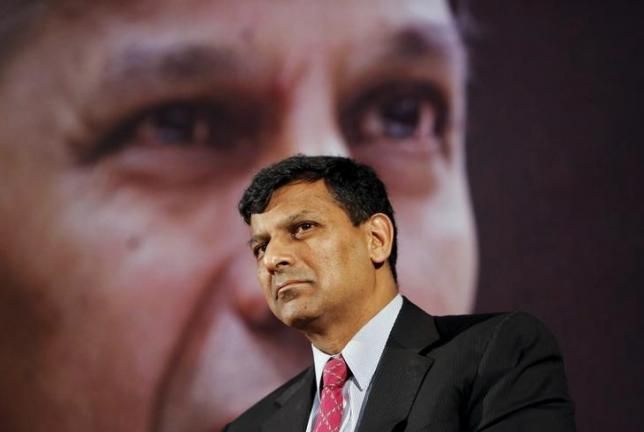
Those accusing me of having stayed behind the curve should first explain how inflation is very low to warrant lower interest rates, says Rajan.
Interacting with journalists on Sunday, the governor of the Reserve Bank of India, Raghuram Rajan, questioned his critics for accusing him of having stayed behind the curve by keeping interest rates high and in the process stifling growth.
Mr Rajan’s arguments in his defence are straightforward. Retail inflation, based on movements in the consumer price index, surged to 5.77 per cent in June, marking the fourth consecutive monthly rise in the index.
However, the repo rate, the rate at which the RBI lends money to commercial banks, has been kept at 6.5 per cent.
Mr Rajan, therefore, makes a valid point when he says that those accusing him of having stayed behind the curve should first explain how inflation is very low to warrant lower interest rates.
With the repo rate being higher than the retail inflation rate by a narrow margin of less than a percentage point, any further cut in interest rates will have no logic particularly when, as he has argued, the inflation rate has been rising in the past few months.
Since assuming the governorship of the central bank, Mr Rajan has remained sharply focused on the need to maintain tight control on inflation.
He has also made considerable progress by keeping inflation within the stipulated target.
One of the key goals of the central bank is to maintain price stability and Mr Rajan must be complimented for achieving that goal.
However, the manner in which Mr Rajan has focused on fighting inflation has raised two important issues, whose implications need to be closely examined.
One, the choice of the consumer price index as the yardstick for measuring inflation has come in for some criticism.
Food and beverages have a weight of more than 54 per cent in the consumer price index, with fuel and light accounting for another eight per cent.
This makes the consumer price index hugely sensitive to movements in prices of food and fuel.
Traditionally, food prices have been seasonal in nature and fuel prices are influenced by international developments and trends.
Tracking a consumer price index that is so overwhelmingly influenced by food and fuel items, therefore, can mislead policy makers without revealing the real underlying inflationary pressure in the economy.
This can result in wrong diagnoses and misdirected remedial measures.
It might make better sense if the RBI were to track not just one target to make up its mind on its monetary policy stance, but instead look at the core inflation levels that would exclude the impact of food and fuel prices.
The second issue pertains to the challenges of ensuring the effectiveness of the interest rate instrument in fighting inflation.
While there are clear risks of inflation when interest rates are reduced, it is equally important to keep in mind the efficacy of interest rates in checking inflation in an economy where there are far too many extraneous factors that could influence prices, particularly when the benchmark consumer price index has a huge component of food and fuel items in it.
A delicate choice has to be made since the central bank’s monetary policy stance will have an impact on the cost of money with obvious consequences for industry, its costs of doing business and eventually growth.
Reining in inflation is an important goal, but chasing it while using a yardstick like the consumer price index could be risky and set the central bank up for failure.
Image: RBI Governor Raghuram Rajan. Photograph: Reuters










